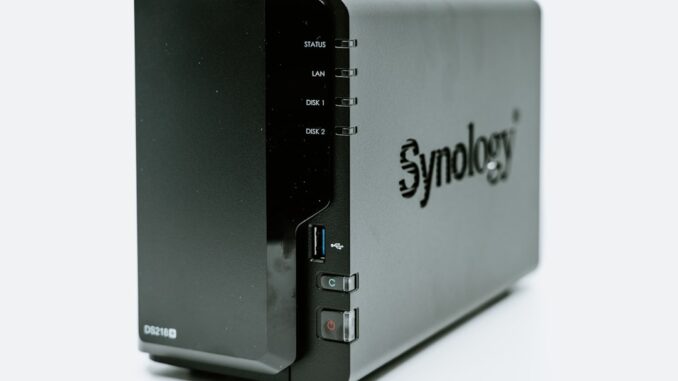
Summary
Synology has launched a new line of backup appliances aimed at the enterprise market, called ActiveProtect. These appliances combine Synology’s hardware with their ActiveProtect Manager operating system to offer a complete backup and recovery solution. The ActiveProtect line signifies Synology’s move towards the enterprise market, challenging established players like Dell and HPE.
Dont let data threats slow you downTrueNAS offers enterprise-level protection.
** Main Story**
Synology, you know, the company that’s been killing it with network-attached storage (NAS) for smaller businesses? Well, they’re making a serious play for the big leagues now. They’ve launched a new line of backup appliances called ActiveProtect, and it’s a pretty big deal.
Think of it as a strategic pivot. Synology’s going head-to-head with giants like Dell and HPE in the enterprise backup space. Ambitious, right?
The ActiveProtect lineup currently includes a few different models, a few different sizes, a few different use cases.
- DP7400: For your classic data center setup.
- DP340 & DP320: These are the compact, edge-focused options.
Each one comes pre-loaded with optimized hardware and software, it really is designed from the ground up for backup and recovery. We’re talking beefed-up RAM and a special operating system called ActiveProtect Manager. This dedicated OS is all about making backup and recovery simpler, more streamlined and management all the more easier. And, just a heads up, the naming convention is different from Synology’s usual DS (DiskStation) and RS (RackStation), which is your first hint that this is something new.
These ActiveProtect appliances are pretty versatile. They play nice with a ton of workloads, things like VMware vSphere, Microsoft Hyper-V, NetApp OnTap, Nutanix Files, Microsoft 365, Oracle Database, and even SQL Server. And, more importantly, they come with some pretty cool features like air-gapping, immutability, and deduplication. All that improves data security and really helps you make the most of your storage. On top of that, they can link up with cloud storage services, Synology’s C2 Cloud Storage or any platform that works with S3. This adds some welcome flexibility for backup and disaster recovery planning.
Now, let’s not kid ourselves, Synology is facing an uphill battle here. The enterprise market is tough, very tough. Established vendors have a huge head start, deep pockets, and a massive amount of experience, so it is understandable if Synology do struggle.
While Synology is a familiar name for SMBs, they need to prove they can handle the bigger, more complex needs of enterprise customers. The other guys often roll out updates and hardware refreshes more often, which is, as you know, critical for staying ahead of ransomware. So, Synology needs to show they’re committed to constantly improving, providing enterprise-grade support, and, generally, being in it for the long haul to really gain some ground.
That said, the ActiveProtect line isn’t just a random shot in the dark. It reflects a broader trend in the backup world: integrated appliances that combine hardware and software. This approach simplifies deployment and management, which in turn makes it easier for companies to put comprehensive backup and recovery strategies in place. And, let’s not forget, the appliances can protect physical servers, virtual machines, and SaaS applications, which is essential in today’s complex IT landscapes.
I saw this firsthand at a previous company. We spent weeks wrestling with a cobbled-together backup solution before finally switching to an appliance. The difference was night and day – backups were faster, restores were easier, and I actually got some sleep.
Features like incremental backups and cross-file deduplication minimize storage consumption, it’s all about being cost effective. Plus, flexible restore options, including bare-metal, file-level, and instant VM restores, give you granular control over recovery, so downtime can be minimised.
At the end of the day, Synology’s move is a significant one. The ActiveProtect line presents a potentially compelling alternative to existing solutions, especially for organizations that want a streamlined, integrated approach. Whether or not it succeeds really depends on Synology’s ability to meet the specific demands of enterprise customers and demonstrate their commitment to this market. As of February 14, 2025, ActiveProtect represents Synology’s most ambitious effort to date in the enterprise backup arena. And frankly I’m pretty interested to see how it plays out.


“Beefed-up RAM,” you say? Is that the tech equivalent of adding racing stripes for extra speed? Let’s hope it translates into equally beefed-up security against those ever-persistent digital villains.
Haha, love the racing stripes analogy! Absolutely, the increased RAM should definitely contribute to faster processing, which *is* key for enhanced security protocols. Hopefully ActiveProtect can handle those digital villains!
Editor: StorageTech.News
Thank you to our Sponsor Esdebe
Synology going after Dell and HPE? That’s like your local coffee shop suddenly deciding to compete with Starbucks! I’m keen to see if their “edge-focused options” can help enterprises stay sharp, or if they’ll need a double shot of support to keep up.
That’s a great analogy! The edge-focused options are definitely interesting. I think the key will be how well Synology can tailor its support and services to the unique needs of enterprise clients, especially in distributed environments. It will be interesting to see if they succeed!
Editor: StorageTech.News
Thank you to our Sponsor Esdebe